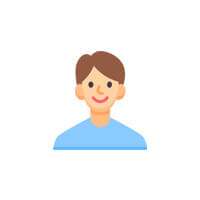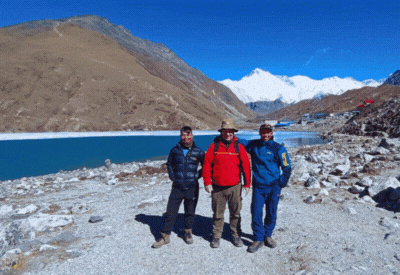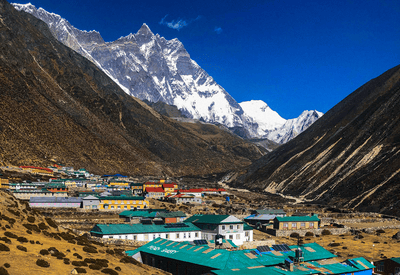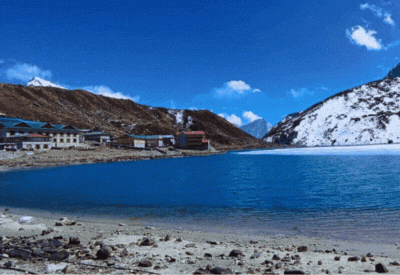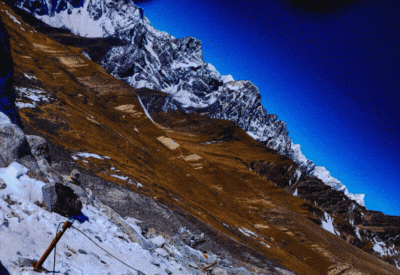NOTE: Lukla is one of the most sensitive airports in the world, there are always chances of flights getting delayed or cancelled. Just in case it gets cancelled for a few days and you have limited time, you can take a Helicopter ride to Lukla, which will cost you around 500 USD extra for one way per person, but in that case, you will get a refund of your flight ticket money. We suggest you have a few extra days at the end to make sure this trip will not affect your international flight back home if you have a tight schedule.
🛂 Everest Base Camp Permits
The Everest region, home to the world's tallest mountain, is a protected area rich in natural beauty, biodiversity, and Sherpa culture. To help preserve its pristine landscapes and heritage, the Government of Nepal requires all trekkers to obtain specific permits before beginning their journey.
Although the cost of these permits is modest compared to the overall trip expenses, they play a critical role in conserving the majestic Himalayan ecosystem for future generations of trekkers and local communities alike.
✅ Why Permits Are Required
Permits ensure:
Preservation of the Sagarmatha National Park, a UNESCO World Heritage Site.
Sustainable tourism development in the Khumbu region.
Support for local governance and infrastructure through theRural Municipality permit.
Let’s honor this incredible region, once traversed by legends like Sir Edmund Hillary and Tenzing Norgay, by traveling responsibly and respecting the environment.
📋 Required Permits for EBC Trek
1️⃣ Khumbu Pasang Lhamu Rural Municipality Entrance Permit
Cost: NPR 2,000 per person (~USD 17)
Purpose: Entry into the local administrative area of the Khumbu region.
Where to get it:
2️⃣ Sagarmatha National Park Entry Permit
Note: Both permits are mandatory and checked at various points along the trail. Himalaya Hub will arrange all required permits for our clients as part of your trek package.
How to Obtain These Permits
While the process might seem overwhelming for first-time trekkers, it’s actually quite simple—especially when trekking with Himalaya Hub, where we take care of the paperwork for you. If you're getting permits independently, here’s how:
🧾 Required Documents
A valid passport (and a photocopy)
Two passport-sized photos
Permit fees in Nepalese Rupees
🏢 Where to Go
- In Kathmandu (for Sagarmatha permit):
Department of National Parks & Wildlife Conservation (Bhrikutimandap)
- In Lukla or Monjo (for both permits):
Local counters for the Rural Municipality and Park permits
⚠️ Rules and Regulations in the Everest Region
To protect the fragile Himalayan environment and respect the traditions of the Sherpa people, all trekkers are expected to follow these simple but important guidelines:
🙏 Respect Local Culture
🗑️ Do Not Litter
🥾 Stay on the Trail
Stick to designated trekking routes.
Avoid shortcuts, which contribute to soil erosion and trail degradation.
🔥 No Fires
🐐 Respect Wildlife
📢 Follow Local Guidelines
Listen to your guide, park officials, and local authorities.
Stay updated on route closures, weather alerts, and safety protocols.
 Himalaya Hub Handles Everything for You
Himalaya Hub Handles Everything for You
When you book with Himalaya Hub Adventure, you don’t need to worry about permit queues, language barriers, or confusion. We:
Secure all necessary permitson your behalf
Ensure compliance with local rules
Support eco-friendly trekking practices
Want to know more about the Everest Base Camp trek?
👉 Click here to explore Everest base camp trek permits
🗓️ Best Time to Go to Everest Base Camp
The classic season are: Spring and Autumn. But the reality is more nuanced.
Everest Base Camp (EBC) is open for trekking year-round, and each season offers a unique experience—whether you’re after vibrant blooms, cultural festivals, solitude in snow, or monsoon greenery. Below is a breakdown of what to expect in each trekking season, to help you decidethe best time for your adventure.
🌸 Everest Base Camp Trek in Spring (March to May)
Spring is one of the most popular seasons for the EBC trek—and for good reason. After a long winter, the trails come alive withblooming rhododendrons, the skies are generally clear, and the views of Everest and other snow-capped peaks are nothing short of spectacular.
✅ Pros:
Crystal-clear mountain views with minimal cloud cover
Comfortable weather for long trekking hours
Lush landscapes with colorful wildflowers and alpine vegetation
⚠️ Cons:
🌧️ Everest Base Camp Trek in Monsoon (June to August)
Monsoon is the least popular time to trek to Everest Base Camp due to frequent rain, leeches on the trail, and poor flight visibility. However, those who don’t mind getting a little wet will be rewarded withlush greenery, less-crowded trails, and moody, dramatic scenery.
✅ Pros:
Trails and teahouses are quieter
The landscape is lush, green, and photogenic
Opportunities for unique and peaceful nature encounters
⚠️ Cons:
Flights to Lukla often face delays or cancellations
Slippery trails and reduced mountain visibility due to clouds
Leech-prone forests in the lower altitudes
🍁 Everest Base Camp Trek in Autumn (September to November)
Autumn is the second peak season, offering the clearest skies, fresh air, and stunning views after the monsoon has washed the dust from the atmosphere. This season also coincides with Nepal’s biggest festivals—Dashain and Tihar—adding cultural flavor to your trek.
✅ Pros:
Perfect trekking weather and unbeatable visibility
Opportunity to enjoyNepalese festivals along the way
Well-established trail conditions
⚠️ Cons:
Lodges and trails can get busy, especially in Namche, Tengboche, and Gorakshep
Nights get noticeably colder, particularly above 4,000 meters
❄️ Everest Base Camp Trek in Winter (December to February)
For trekkers looking for peace, solitude, and snow-covered serenity, winter offers a raw, adventurous experience. Despite the cold, winter often bringscrisp skies and clear views, but heavy snow can occasionally block passes and remote trails.
✅ Pros:
Fewer trekkers, offering a peaceful and personal journey
Spectacular snowy landscapes and icy peaks
Teahouses are more welcoming, with personalized attention
⚠️ Cons:
Extreme cold, especially at night
Some teahouses may be closed at higher altitudes
Snow can occasionally block trails (like at Kala Patthar or Gorakshep)
🔄 Off Season Considerations
Monsoon and Winter may be less popular, but they offer unique advantages:
Quieter trails = more intimate experience
Different visual aesthetics (greenery or snow)
Better deals on accommodations and packages
However, these seasons also demand more gear, strong preparation, and flexibility in your travel plans.
🏆 So, When Should You Go?
Here’s a quick summary depending on your preferences:
| 🎯Priority | 🗓️Best Season |
|---|
| Clear views & stable weather | 🌸 Spring (Mar–May) & 🍁 Autumn (Sept–Nov) |
| Avoiding crowds | ❄️ Winter (Dec–Feb) & 🌧️ Monsoon (Jun–Aug) |
| Cultural immersion | 🍁 Autumn (Dashain & Tihar festivals) |
| Blooming flowers & vibrant nature | 🌸 Spring |
| Budget-friendly travel | 🌧️ Monsoon & ❄️ Winter |
Everest Base Camp Trek Difficulty & Safety
Trekking to Everest Base Camp is a rewarding yet demanding journey—peaking at 5,364 m (17,598 ft)—that tests both your physical endurance and your ability to adapt to high-altitude environments. With the right preparation, fitness regimen, and safety measures in place, you’ll conquer this altitude hike challenge confidently.
Understanding the EBC Trek Difficulty Level
Moderate to Strenuous: Expect 5–7 hours of walking per day over uneven, rocky trails.
Altitude Gain: You’ll ascend gradually from 2,800 m (Lukla) to 5,364 m (Everest Base Camp), with acclimatization stops at Namche Bazaar (3,440 m) and Dingboche (4,410 m).
Terrain: Mixed surfaces—river crossings, stone staircases, ice-slicked paths—require sure-footedness and trekking poles.
Tip: Practice on hilly terrain or staircases with a loaded backpack to simulate trail conditions and improve your balance.
💪 Fitness for the Everest Trek
Achieving a solidfitness for Everest trekbaseline is crucial to enjoy the journey and minimize fatigue:
Cardio Workouts: Hiking, jogging, cycling, or stair climbing (3–5 sessions/week).
Strength Training: Leg presses, lunges, squats, and core exercises to support heavy backpacks.
Endurance Hikes: Weekend treks (4–6 hours) with incremental weight in your daypack.
Flexibility & Balance: Yoga or dynamic stretches to prevent injury on uneven trails.
Best Training for EBC: A structured 8–12 week program combining cardio, strength sessions, and back-to-back long hikes will prepare your body for sustained effort at altitude.
🌬️ Understanding Altitude Sickness
Altitude sickness is unpredictable and potentially serious, making prevention the best approach. Symptoms may include:
Headaches
Nausea
Dizziness
Shortness of breath
Loss of appetite
How to Prevent Altitude Sickness During the EBC Trek
To reduce your risk, follow these important tips:
Ascend gradually: Avoid rapid altitude gains and stick to acclimatization days.
Stay hydrated: Drink plenty of water throughout the trek.
Eat well: Focus on a carbohydrate-richdiet to fuel your body in the mountains.
Avoid alcohol, tobacco, and excessive caffeine.
Listen to your body: If you feel unwell,descend immediately.
Travel with experienced guides who know how to recognize and respond to symptoms.
Bring altitude medication (like Diamox) and a personal first aid kit.
We also recommend consulting your doctor before traveling, especially if you have pre-existing medical conditions.
📝 Want to dive deeper? Check out our detailed blog on Altitude Sickness Prevention Tips for Trekking in Nepal.
⚠️ Natural Hazards & Weather Variability
While rare, the trail can be affected by:
Sudden Weather Shifts: Fog, wind, and snowstorms can ground helicopters and delay itineraries.
Avalanches & Landslides: Most common in pre-monsoon (April–May) and post-monsoon (October–November) seasons.
Safety Net: We build 1–2 extra buffer days into every EBC trek itinerary to accommodate weather-related delays.
By respecting the EBC trek difficulty and following these guidelines, you’ll maximize safety and enjoyment on the trail to Everest Base Camp. Ready to take on the ultimate Everest difficulty level challenge? Reach out for our detailed training plans and fully supported trekking packages!
🛡️ How Safe is it to Embark on the Everest Base Camp Trek?
Trekking toEverest Base Camp (EBC) is a thrilling and transformative experience—and with proper preparation, it’s also a safe one. While the journey takes you to an altitude of 5,364 meters, the trail is designed for trekkers with a good level of fitness, determination, and awareness of high-altitude travel.
Whether you're a seasoned hiker or a first-time adventurer, understanding the challenges and taking the right precautions ensures you can enjoy the trek safely.
Is EBC Trekking Safe?
Yes, it is—when done responsibly. Thousands of trekkers, including families with young children and seniors in their 70s, complete the Everest Base Camp trek every year.
However, altitude sickness remains the biggest safety concern. It can affect anyone, regardless of age or fitness level. That’s why mental preparedness, proper acclimatization, and an experienced guide are essential to a successful and safe journey.
Our Commitment to Your Safety
At Himalaya Hub, your well-being guides every decision:
Certified Guides & Porter Ratio: 1 guide + 1 porter per 2 trekkers, each porter carrying a max of 30 kg.
Daily Health Checks: Oximeter readings and symptom reviews each morning.
Emergency Support: 24/7 contact, optional oxygen, and portable altitude chambers on request.
Insurance Requirement: Mandatory coverage for high-altitude evacuation and medical treatment.
🥘 Food on the Everest Base Camp Trek
Food is an important part of your trekking experience to Everest Base Camp (EBC). It not only fuels your body for the physically demanding days but also brings comfort at the end of long treks. While options are more limited as you ascend, teahouses along the trail offer a surprising variety of dishes — from local Nepali meals to Western-style comfort food.
Where and How You Eat ?
On the EBC trek, you’ll primarily eat at the teahouses where you stay overnight. These mountain lodges provide meals cooked fresh in their kitchens. While the menu gets more basic with altitude, the meals are hearty, warm, and designed to keep you energized.
While you won’t be dining in luxury, the food on the Everest Base Camp trek is surprisingly good considering the remote terrain. It’s filling, often tasty, and helps support the hardworking teahouse owners along the route. Stick to hot, fresh, vegetarian meals, drink lots of fluids, and you’ll be well-fed for your Himalayan adventure.
Above 3,000 meters (beyond Namche Bazaar), it’s strongly advised to avoid eating meat. This is because meat must be carried up on foot from lower altitudes, often without proper refrigeration. To stay safe and healthy, stick to vegetarian meals in the higher elevations.
🍳 Breakfast on the EBC Trek
Breakfast is typically simple yet satisfying, with enough carbs and protein to get your day started. Common options include:
Porridge (with milk, honey, or fruit)
Tibetan-style bread or toast with jam, butter, or honey
Eggs (boiled, scrambled, or omelets with vegetables)
Chapati or pancakes
Tea, coffee (usually instant), and sometimeshot chocolate
🍛 Lunch on the EBC Trek
Lunch is often eaten mid-trek at a teahouse or lunch stop in a village. The options here can vary but typically include:
Dal Bhat – The national dish of Nepal. A balanced meal with lentil soup, rice, and seasonal vegetable curry. It’s filling, healthy, and comes with unlimited refills!
Fried noodles (chowmein) or pasta
Fried rice, macaroni, or thukpa (Tibetan noodle soup)
Soup and bread
Soft drinks or packaged juices may also be available in some places.
🍽️ Dinner on the EBC Trek
Dinner is the main meal of the day after a long trek and usually offers a wider range of choices than lunch. You'll find:
Garlic soup – Recommended for acclimatization
Tibetan bread or roti
Macaroniwith vegetables, spaghetti, or fried potatoes
Dal Bhat (again – because it’s so good!)
Pizza – quality varies depending on location
Rice pudding, applepie, or custard for dessert
Tea, hotlemon, instantcoffee
Some teahouses offerlocal beer or rum, but alcohol is best avoided at altitude
🍰 Snacks & Bakeries
In larger villages like Namche Bazaar, Lukla, or Dingboche, you’ll find small bakeries that offer:
Freshly baked bread, cakes, and pastries
Energy bars, chocolates, biscuits
Local cheese or yak milk products (depending on season)
These treats are perfect for recharging and even picking up packed snacks for the next day’s hike.
💡 Pro Tips:
Bring some of your own snacks (nuts, protein bars, chocolates) for quick energy boosts.
Drink plenty of fluids – try hot lemon or ginger tea to stay hydrated and help acclimatization.
Avoid alcohol until after your trek – it dehydrates you and can worsen altitude sickness.
🛏️ Accommodation on the Everest Base Camp Trek
Along the 16 days journey to Everest Base Camp, your lodgings range from comfortable city hotels to rustic Himalayan teahouses and even a handful of boutique lodges—each offering its own slice of Sherpa hospitality. Your “home” at altitude is more than just a place to rest; it’s where you recharge, swap stories with fellow trekkers, and soak in the mountain culture. Just be sure to pack your trusty sleeping bag, a fully charged power bank, and an adventurous spirit—the Himalayas will handle the rest!
Accommodation in Kathmandu
Before you set off (and after you return), you’ll spend two nights in a well-appointed hotel in Thamel—the bustling hub of Kathmandu’s tourism scene.
Prime location: Steps away from restaurants, cafes, bars, trekking outfitters, and live music spots
Comfort: Twin-sharing rooms with en-suite bathrooms, clean linens, hot showers, and essential amenities
Extras: Daily breakfast (buffet or à la carte), airport transfers, laundry service, and free Wi-Fi
Upgrades available: Deluxe and luxury rooms on request (perfect for those craving a little extra pampering)
If you prefer a higher level of comfort or a luxury stay, we’re happy to upgrade your hotel for an additional fee — just let us know your preferences!
Teahouse on the EBC Trek
Once you hit the trail, traditional teahouses become your nightly stop. These family-run guesthouses offer basic but cozy shelter, home-cooked meals, and unbeatable mountain views.
Teahouse Room Features:
Twin beds or dorm-style rooms (single rooms rarely available)
Blankets provided, but bringing your own sleeping bag is highly recommended
Shared bathrooms with either squat or Western-style toilets
Cold showers are common; hot water (if available) comes at an extra charge
No central heating in rooms — only the dining area is heated, typically with a yak-dung stove
Amenities & Social Spaces
Communal dining halls serve as cozy gathering spots to warm up, enjoy your meals, and chat with fellow trekkers.
Meals are served fresh — breakfast and dinner are included, while lunch is usually eaten along the trail.
Solar-powered lights are the norm, and you can charge your devices for a small fee.
Boiled water is available for drinking (usually not free) — we highly recommend bringing a LifeStraw or water purification tablets to reduce plastic bottle use and stay safe.
🏡 Luxury Lodges on the EBC Trail
Craving a touch of comfort at higher elevations? A handful of Namche Bazaar lodges, Tengboche monastery stays, and Dingboche guest houses now offer upgraded amenities below 12,000 ft:
- En suite bathrooms with hot showers
Heated rooms and plush bedding for a restful night’s sleepPlush bedding and extra amenities
Spacious dining areas with expanded menu choices (including international dishes)
Wi-Fi hotspots (where cell service permits) and dedicated charging stations
These boutique lodges are perfect for trekkers who want a more refined “glamping” feel without straying off the classic route.
✨ If you’d like to upgrade your nights on the trail, ask about our Everest Luxury Lodge Trek package for full details on pricing and availability.
Cultural Insights of the Everest Region
By immersing yourself in the cultural fabric of the Everest region, you’ll leave with more than photos—you’ll carry the wisdom, humility, and kindness of the Sherpa people with you long after your trek ends.
Sherpa Traditions and Local Experiences
TheEverest Base Camp Trek is far more than a physical journey—it's a chance to connect with the spiritual and cultural heartbeat of the Himalayas. At the core of this experience is the Sherpa community, the proud guardians of the Khumbu region, renowned for their hospitality, strength, and deep-rooted Buddhist beliefs.
Sherpa Traditions: A Life Shaped by the Mountains
The Sherpa people have lived in harmony with the high Himalayas for generations. Their traditions are shaped by the harsh terrain, strong community bonds, and a spiritual reverence for nature.
What to Expect:
Warm hospitality in teahouses and villages — don’t be surprised if you’re invited in for a cup of yak butter tea.
Traditional dishes like tsampa (roasted barley flour), momos (dumplings), thukpa (noodle soup), and of course, dal bhat.
Spiritual practices observed daily through prayer flags, mani stones, and early morning chants.
🎉 Sherpa Festivals: Celebrations with Spiritual Depth
Time your trek right, and you could witness the vibrancy of Sherpa festivals—an experience that truly sets the cultural tone of the region.
Mani Rimdu Festival(October–November): Held at Tengboche Monastery, this festival combines masked dances, chants, and blessings.
DumjiFestival (June–July): Celebrated in various villages, Dumji marks the birth of Guru Rinpoche, with traditional songs, dancing, and community feasts.
These events are open to visitors and offer a rare insight into Himalayan Buddhism and Sherpa community life.
Explore Iconic Monasteries & Sacred Sites
As you trek through the Khumbu, you’ll pass countless sacred sites that hold deep significance for the locals.
Tengboche Monastery (3,867m): The spiritual center of the region, offering panoramic views of Ama Dablam and a peaceful spot to observe prayer ceremonies.
Prayer wheels & stupas: Scattered along the trail, these sacred landmarks are integral to Sherpa spiritual life. Spin prayer wheels clockwise for blessings.
Khumjung Monastery: Home to the legendary Yeti scalp, this lesser-known monastery offers a mystical and intriguing visit.
🤝 Etiquette & Cultural Sensitivity
Being culturally respectful enhances your experience and fosters genuine connections with locals. Keep these in mind:
👍 Do:
Greet people with a respectful “Namaste” or “Tashi Delek.”
Walk clockwise around religious objects (chortens, mani walls, stupas).
Remove your shoes and stay quiet when entering monasteries.
Supportlocal businesses by shopping local and eating in family-run tea houses.
🚫 Don’t:
Touch or lean on prayer flags and religious artifacts.
Point with your fingers—gesture with an open hand.
Give sweets or money to children—instead, consider donating to local schools or charities.
Extend Your Stay: Cultural Exploration in Namche Bazaar
Namche Bazaar isn’t just a rest stop—it’s a cultural hotspot! Spend an extra day here to truly absorb the Sherpa way of life.
Visit the Sherpa Culture Museum and the Edmund Hillary Visitor Centre.
Browse the Saturday market for handmade crafts and local foods.
Chat with locals over a cup of yak butter tea in one of Namche’s cozy cafes.
🛬 Flying into Lukla: Gateway to the Everest Region
Flying into Lukla is the most thrilling—and occasionally nail-biting—way to kick off your Everest Base Camp Trek with Flights. Perched at 2,840 m (9,317 ft) amid towering Himalayan giants, Lukla’s Tenzing–Hillary Airport is the aerial gateway to the Khumbu. A short 20–35 minute hop aboard a Twin Otter or Dornier sets the tone for the adventure ahead.
While renowned for its dramatic landing strip and mountainous terrain, flights to Lukla are common and generally safe—yet flexibility and preparation are essential due to weather variability and operational logistics.
🗺️ Departure Points for Your Lukla Flight
There are two main airports serving Kathmandu to Lukla flights—your departure depends on the season and the Civil Aviation Authority’s allocations.
✈️ Ramechhap/Manthali Airport (Peak Season Redirect)
📍 Location: Ramechhap (also called Manthali), about 132 km from Kathmandu
📅 When: Applies during March–May & October–November
🚌 Drive from Kathmandu: 5–6 hours (pre-dawn transfer, usually 1–3 a.m.)
🕒 Flight Time to Lukla: ~20 minutes
During the busiest trekking seasons, flights to Lukla arererouted to Ramechhap Airport to avoid air traffic congestion at Kathmandu’s Tribhuvan International Airport.
Tip: You’ll typically leave Kathmandu very early in the morning (around 1–3 a.m.) to reach Ramechhap in time for your flight.
✈️ Tribhuvan International Airport, Kathmandu (Off-Peak Direct)
📍 Location: Tribhuvan International Airport (Kathmandu)
🕒 Flight duration to Lukla: About 35 minutes
📅 Applies during: January, February, June, July, August, September, and December
During the off-peak trekking months, flights resume direct service from Kathmandu to Lukla—saving you the long pre-dawn drive to Ramechhap.
Note: Flight origin and schedule are set monthly by Nepal’s Civil Aviation Authority. Always confirm your Everest Base Camp flight package details in advance.
🌧️ Weather, Delays & Buffer Days
Lukla is a high-altitude airport prone to fast-changing weather conditions, including fog, wind, and sudden cloud cover. Because of its short runway and mountainous terrain, flights can only operate in clear weather and daylight hours, so:
Expect Delays/Cancellations: Especially during monsoon (June–September) or sudden storms.
Plan Buffer Days: We recommend adding 1–2 extra days in Kathmandu or along the trail to accommodate weather-related changes.
🧳 Baggage Allowance & Packing Tips
Domestic flights to Lukla are operated by small Twin Otter or Dornier aircraft, which have strict weight limits for safety:
Total Baggage Limit: 15 kg (33 lbs) per person ( main duffel bag + daypack combined )
💸 Excess Baggage Charges: Approx. USD $2–$5 per extra kg
⚠️ Even if you're willing to pay, airlines may still refuse overweight baggage due to load balancing needs on the aircraft.
Pro Tips:
Use compression sacks to slim down bulky items.
Weigh your full kit at home to avoid surprises.
Prioritize essentials—every ounce counts on a Lukla flight Everest bound plane.
✈️ Booking Your EBC Trek with Round-Trip Flights
Many operators bundle round-trip EBC trek with flights into one seamless package:
Pre-assigned Seats: Secure your spot on early-morning flights.
Airport Transfers: Hassle-free shuttle between your Thamel hotel and the departure airport.
Flight Permits & Airport Taxes: Included up front, so no last-minute fees.
When shopping for an Everest Base Camp flight package, compare:
By choosing a comprehensive flight package, you focus on the magic of the Himalayas—while we handle the logistics of Kathmandu to Lukla flights.
Preparation & Packing Tips for Everest Base Camp Trek
Physical Fitness:
To enjoy the trek and reduce the risk of altitude-related issues, start preparing early. Focus on cardio workouts likehiking, jogging, and stair climbing, and do longer practice hikeswith a backpack. The EBC trek is moderate to strenuous, reaching over 5,500 meters (18,000+ ft)and requiring 5–7 hours of walking per day. Good physical fitness and prior trekking experience are strongly recommended. Take it slow on the trail and listen to your body to acclimatize properly.
Altitude Acclimatization:
Follow rest days as scheduled. Mild altitude sickness (headache, nausea) can occur; stay hydrated, avoid alcohol, and consider Diamox if needed. The trek’s pace and days at Namche/Dingboche are designed to help you adjust. Emergency helicopters are available if absolutely needed (though mandatory travel insurance is required
Essential Gear:
Bring sturdy, waterproof hiking boots (broken in well in advance). Layered clothing is key: base layers, insulating mid-layers, and a warm down jacket and fleece (provided if needed). Other must-haves: windproof outer shell, warm hat and gloves, sunglasses, sunblock, and a good backpack. An insulated sleeping bag is usually provided by the operator, but you should carry moisture-wicking base layers and trekking trousers. An inflatable sleeping pad is recommended. Seedetailed gear checklist below.
On-the-Trail Gear:
A wide-brim hat or buff, hydration system (2–3 L water capacity) and water purification (tablets or filter) are important. Bring snacks, a headlamp, sunglasses, lip balm, and a basic first-aid kit. Power banks are wise for recharging devices – most lodges charge phones for a small fee. Quality trekking poles are very helpful on uneven ground. Remember that at high camps night temperatures will be well below freezing.
Clothing Layers (Recommendation):
moisture-wicking long-sleeve base layer, wool or fleece mid-layer,insulated down jacket,trekking pants,waterproof/breathable rain jacket and pants,warm hat,gloves,and several pairs of wool trekking socks. Uniquely, Himalaya Hub provides a down jacket and sleeping bag for use during the trek as part of the package.
Trekking Style:
This is a classic teahouse trek – you stay in modest mountain lodges each night and receive three meals per day. You do not need to carry food, tents or fuel. Simply carry your daypack (with warm clothing, water and camera) and let guides/porters handle the main luggage. (For reference: “Teahouse trekking” means you sleep in cozy local lodges on a full-board basis
🎒 Gear Checklist: Everest Base Camp Trek Gear List
A well-packed Everest Base Camp Trek Gear List is your ticket to comfort, safety, and sheer enjoyment on the trail. From essential trekking gear Everest staples to optional luxuries, this checklist covers everything you need to tackle the world’s highest trekking route with confidence.
Careful packing makes all the difference on the Everest Base Camp trek. Here's a comprehensive checklist to help you prepare effectively:
👟 Footwear & Clothing
Waterproof hiking boots (sturdy, ankle-support): your most important EBC packing essential
Trekking socks (wool or synthetic) – 4–6 pairs
Sock liners (optional – blister prevention)
Gaiters (optional – snow/mud protection)
Thermal base layers(top & bottom)
Fleece or wool mid-layer
Insulated down jacket (–15 °C rating; available to rent from Himalaya Hub)
Waterproof breathable jacket & pants
Warm hat, gloves, and neck gaiter or buff
🎒 Backpack & Bedding
30–40 L daypack (for water, snacks, camera, layers)
Duffel bag for porter (provided by trekking company)
Sleeping bag (–15 °C rated; rental available)
Inflatable sleeping pad or self-inflating mattress (adds warmth & comfort)
Trekking Aids & Accessories
Trekking poles (lightweight, adjustable – vital on steep or uneven terrain)
Headlamp with extra batteries
Hydration bladderorwater bottles (2–3 L total)
Water purification tablets or filter
Sunglasses (100 % UV protection – crucial above 5,000 m)
Sunscreen (SPF 30+),lip balm with SPF
Personal Items & Toiletries
First-aid kit (pain relievers, blister care, altitude meds)
Toiletries (toothbrush, biodegradable soap, quick-dry towel)
Toilet paper & hand sanitizer (limited facilities on trail)
Snacks (energy bars, nuts, chocolate)
Dry sacks or heavy-duty plastic bags (keep gear dry and organized)
📷 Electronics & Power
Documents & Miscellaneous
Passport (≥6 months validity)
Nepal visa (on arrival)
Passport-size photos (for permits)
Travel insurance (must include high-altitude trekking coverage)
Cash (Nepali rupees) for small purchases and tips
Copies of important documents (physical & digital backups)
Rent or Buy in Kathmandu (Thamel)
Don’t worry if you’re missing a few items —Kathmandu offers affordable gear for rent or purchase, including:
💰 Everest Base Camp Trek Cost 2025 & 2026
Planning your Everest Base Camp Trek Cost ahead of time ensures there are no surprises on the trail. Prices for a standard 15–16 day itinerary typically range from USD 1,200 to 2,500, influenced by group size, level of comfort, and additional services. At Himalaya Hub Adventure, our signature 15-day EBC package starts at USD 1,840, delivering exceptional value and peace of mind.
✅ Domestic flights (Kathmandu–Lukla–Kathmandu)
✅ Licensed English-speaking guide and porters
✅ Full board meals (breakfast, lunch, dinner) during trek
✅ Accommodation in standard teahouses/lodges
✅ Trekking permits (TIMS, Sagarmatha National Park)
✅ Down jacket and sleeping bag (on returnable basis)
✅ Airport transfers and assistance
✅ First-aid kit and safety equipment
✅ Certificate of Completion
❌ Not included: International airfare, Nepal visa, travel insurance, drinks, snacks, personal gear, tips, and optional extras like hot showers or battery charging at lodges.
Customizations & Discounts
Group Rates: Save up to 10–15% when trekking with 4+ people.
Private Trek Upgrade: Tailor your schedule, accommodation, and pace.
Luxury Lodge Add-On: En suite rooms, heated dining, and premium meals.
Helicopter Return Option: Fly back from Pheriche or Gorak Shep for a dramatic finale.
Everest Trek Budget Tips
Book Early: Secure lower domestic flight rates.
Pack Smart: Avoid costly over-weight fees on Lukla flights.
Carry Cash: Most teahouses don’t accept cards.
Travel Insurance: Shop for policies that include high-altitude trekking coverage.
Understanding your Everest Base Camp package cost upfront helps you craft a worry-free budget—so you can focus on the mountains, not the math. Ready to lock in your adventure? Contact us for a personalized quote today!
📞 Contact us today for apersonalized Everest Base Camp trek quote or to inquire about group discounts and luxury add-ons.
📋 How to Book Your Everest Trek with Us
Booking your dream EBC trek with Himalaya Hub is quick and hassle-free:
1️⃣ Contact Us
- Reach out via our website, email, or WhatsApp. Let us know your preferred dates, group size, and any special requirements.
2️⃣ Get a Quote
- We'll send you adetailed itinerary and cost breakdown tailored to your needs.
3️⃣ Confirm the Trek
- Once you’re happy with the plan,secure your spot by paying a 10–20% deposit. You’ll receive an invoice and confirmation.
4️⃣ Get Prepared
- We’ll provide a fullpre-departure checklist, gear recommendations, and help you with visa info, travel insurance, and more.
5️⃣ Arrival in Kathmandu
- Our team will greet you at the airport and take care of everything from there – so you can relax and enjoy the journey!
🧭 Guides & Services
Trek With Certified Sherpa Guides
Our Everest Base Camp trek with certified Sherpa guides ensures not just safety—but cultural insight and meaningful experiences. Every guide is:
Government licensed and fluent in English
Professionally trained in high-altitude first-aid and emergency response
A local expert who knows the Khumbu region inside-out, adding rich cultural context to every step of your journey
Porter Support & Weight Limits
Hiring a porter for the Everest Base Camp trek is a smart and respectful choice — it helps you enjoy the trek comfortably while providing crucial employment to locals. At Himalaya Hub Adventure, each porter typically carries:
Carries 15–20 kg (33–44 lbs) of combined luggage from 2 trekkers
Is provided with weather-appropriate clothing and insurance
Receives fair wages and is treated with respect throughout the journey
👉 You’ll get a duffel bag (included in the trek package) for your belongings. Carry your own daypack (30–40 L) for daily essentials like water, snacks, warm layers, and a camera.
Note: Overloading porters is unethical. Be mindful and pack efficiently to stay within the weight limits.
Trekking Guide Guidelines
Your trekking guide is not just a navigator, but a safety expert, motivator, translator, and cultural ambassador. All guides at Himalaya Hub Adventure are:
Licensed by the Government of Nepal
Experienced with multiple high-altitude treks
Trained in altitude sickness awareness and basic first aid
Fluent in English (and sometimes other languages like German, Spanish, or French)
Familiar with local customs, history, and geography
They ensure your trek runs smoothly, manage logistics, and are trained to make critical decisions in emergency situations (e.g., organizing a helicopter evacuation if needed).
Safety Tip: Always follow your guide’s instructions, especially related to acclimatization and altitude risks.
💵 Tipping Etiquette in Nepal’s Trekking Culture
Tipping is not mandatory in Nepal, but it is customary and highly appreciated — especially in the trekking and tourism industry, where tips contribute significantly to the income of guides, porters, and support staff.
Recommended Tipping Guidelines (per trekker):
Guide: $8–12 USD per day
Porter: $5–8 USD per day
Total (15-day trek): ~$150-200 for guide / ~$100-150 for porter
Group Tip Pooling: In group treks, it’s common for trekkers to pool tips together and present them at the trek's conclusion.
Tipping reflects your gratitude for their hard work and support in making your Himalayan experience memorable and safe.
The Everest Base Trek is a journey like no other, offering breathtaking views of the Himalayan peaks, encounters with Sherpa culture, and challenges that reward you with an unforgettable experience
Whether you’re embarking on this Everest BC Trek 15 days adventure for the first time or are a seasoned trekker, preparation is essential to make the most of your journey.
Here are the top tips to help you prepare and stay safe during the trek while ensuring you respect the local culture and environment.
Trekking Essentials for a Memorable Experience
Travel with a Licensed Guide
Hiring a licensed guide enhances your safety and experience. Guides provide:
Providing expert navigation on rugged trails.
Sharing insights about Sherpa culture and local history.
Offering assistance during emergencies, ensuring a safe journey.
Budget Wisely
The cost of the Everest Base Camp Trek varies depending on factors like group size, accommodations, and guide/porter services. On average:
👉 Additional costs may include Wi-Fi, hot showers, and tipping guides and porters.
Final Tips for the Himalaya Trekking Everest Base Camp
Be Flexible and Open-Minded
Weather in the Himalayas can change rapidly, causing delays in flights or trekking schedules are common. Stay adaptable and focus on enjoying the journey.
Leave No Trace
Help preserve the pristine beauty of the Sagarmatha National Park by practicing eco-friendly trekking:
What Our Clients Say

"I met Ramez when he bumped in my taxi at the moment I got to Katmandu and since then we had a wonderful Nepalese journey together.
I booked the Everest Base Camp trek with Himalaia Hub and it was definitely the best choice! They were super helpful during all the process, helping with the gear I should buy and even speaking with my mom back in Brasil while I was on the trek with no internet ahahaha. After the trek Ramez continued helping me with all my plans, from trip to Pokhara up to recommendations of public buses I should get and restaurants I should go.
I totally recommend Himalaia Hub team for your stay in Katmandu. Great local people, great agency! Thank you Himalaia Hub family for making my trip so amazing!"
★★★★★
-Carolina Mello
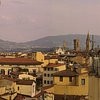
"We had the greatest time on our trek to Everest Base Camp with our amazing guide Biru and our porter Pasang. The two of them took care of me and my wife with everything we needed. Some days were tough but Biru made sure we were going at a comfortable pace and that we were doing okay always. It truly does feel like you are family with Biru and Pasang. We would play cards and have good chats along the way and eating our meals. Thank you so much Biru for the amazing experience if we decide to come back to do 3 passes it could only be with you!"
★★★★☆
-Colin R
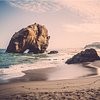
"We choose to do the Kanchenjunga base camp instead of the Everest or Annapurna base camp to avoid tourists and it was amazing! We were alone on the trails ! We book the trip with a deposit of 50$ and paid the rest the day before leaving (many currencies are available). We chose to pay the accommodation and food ourselves, we only paid the guide, permits and transport in advance. The 20 days trek was intense but doable and the landscape were really amazing! The guide is called Shiva and he become a friend during the trek. He is funny, he is really concerned about our comfort. He made everything to help us enjoying our trip in his beautiful country. It was one of the best experience of my life thanks to him ! I highly recommend you to chose him especially if you’re young (we were almost all 24 yo)
THANK YOU SHIVA FOR THOSE 3 AMAZING WEEKS!"
★★★★★
- Marin P
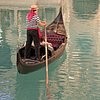
"trip is starting with green mountains from lukla airport. You witness to beautiful valleys, rivers and going into alpines and colder places as you go high. challenging trip but one of the most stunning view on earth. It was well organized and executed trip. Special thank you to Rupesh, Prakash, Raz and Eddie for thinking each detail and making this trip unforgettable. strongly recommended"
★★★★★
- deniz a
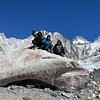
"My friend and I had a world class experience with Himalaya hub. The trip went to Everest base camp with Rupesh and Ramkasi. Rupesh was a great guide who was fun, knowledgeable and took good care of us. Especially on the food front, he was good until we didn't go to bed hungry. Ram was the world's sweetest porter who was always helpful. All in all we had a great trip with a lot of good people. We can definitely recommend!"
★★★★★
- Tobias F
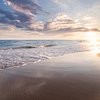
"I can’t express how thankful I am for Ramesh and Raj. They took care of everything, and made our Everest base camp journey a dream come true. Raj as our guide made us feel protected and safe at all times. I had taken my first trip to Nepal in 2019 and even then I knew Himalaya Hub Adventures was going to be the company I’d choose for my EBC trek. I will be raving about this trip for a long time coming!! Thank you Ramesh and Raj for the trip of a lifetime!"
★★★★★
- Lauren H
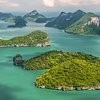
"Fantastic nice country, very friendly people, almost everybody speaking English, reasonably prices and god services.
Our tour guide also amazing and we trekked to Everest base camp.
Thanks Ram, thanks Nepal
We will meet soon again
Kursat Atli
Turkiye"
★★★★★
- Kursat A
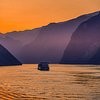
"Wow! What an experience! Had such an amazing time doing the Everest Base Camp Trek. A huge shout out needs to go in particular to my guide Kishor. He is a legend! He ensured I had a fantastic experience and it was a safe trek. Kishor made this trip for me he was so attentive, kind and always ensured I was having a good time. Thank you so much Kishor!"
★★★★★
- Jesse L
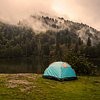
"Such an amazing trek! Nepal is from far the best place to be for trekking!
I did Everest Base Camp and Island peak with Ram, the best guide ever! Those landscapes were insane!
Thankyou, I will never forget this."
★★★★★
- Jason D
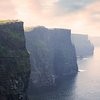
"Overall just a wonderful company.
They have very fair prices.
The treks are all-inclusive : they book planes, hotels, rent gear for you etc, so you can spend 100% of your time enjoying the trip.
I even suffered altitude sickness the day after reaching Everest Basecamp and the company organized a heli rescue for me!"
★★★★★
- William M
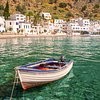
"We did a 7 days tour in Nepal with the Himalaya Hub team and can recommend them 100%.
They were extremely friendly, created the best route to make sure we visited all the spots we wanted, while being flexible as well along the way to make some adjustments. Our tour included Lumbini, Pokhara, Australian base camp, Everest flight, Paraglaider in Pokhara, and Kathmandu.
Thanks Puru, Druba, Ram and the rest of the team for making this an unforgettable experience for us! Next, is to come back soon for ABC! Cheers!"
★★★★★
- Samsoif
Start Your Everest Base Camp Trek Adventure!
Seize your adventure with private, small group, or luxury Everest Base Camp trek packages—slots fill fast each Spring and Autumn!. Let HimalayaHub guide you every step of the way on this unforgettable trek to Himalaya. Call now to book your Everest Base Camp Nepal tour operator package—small groups, private departures, and helicopter return options.
Book Now
Add-On Activities & Extensions
Everest Heli Panorama: Instead of (or in addition to) the flight back, take a helicopter tour over Everest and other peaks for unrivaled aerial views.
Island Peak or Ama Dablam Climbs: For experienced mountaineers, add on a summit climb of Island Peak (6,189m) or Ama Dablam (6,812m) after the trek.
Three-Pass Everest Trek: Extend the trek to include Gokyo Lakes and pass crossings (Chola, Renjo, Kongma Passes) for a multi-pass adventure.
Short Everest Trek: If 14 days is too long, consider our 10–12 day “short” EBC trek (omitting one acclimatization day) or include a helicopter return to save time.
Nepal Cultural Tours: Combine the trek with Chitwan jungle safari or a tour of Nepal’s Himalaya-related destinations (like Lumbini or Pokhara).
Tibet Extensions: Our Tibet/China Everest Base Camp Tour (Kathmandu–Lhasa–EBC on the Tibetan side) can be combined with this trek for the full Everest experience.
Local Holidays/Festivals: Time your trek around Sherpa festivals (e.g. Mani Rimdu in Oct/Nov at Tengboche) for a cultural bonus.
Related Treks: Mardi Himal Trek, Annapurna Base Camp Trek, Everest Base Camp 12 Days

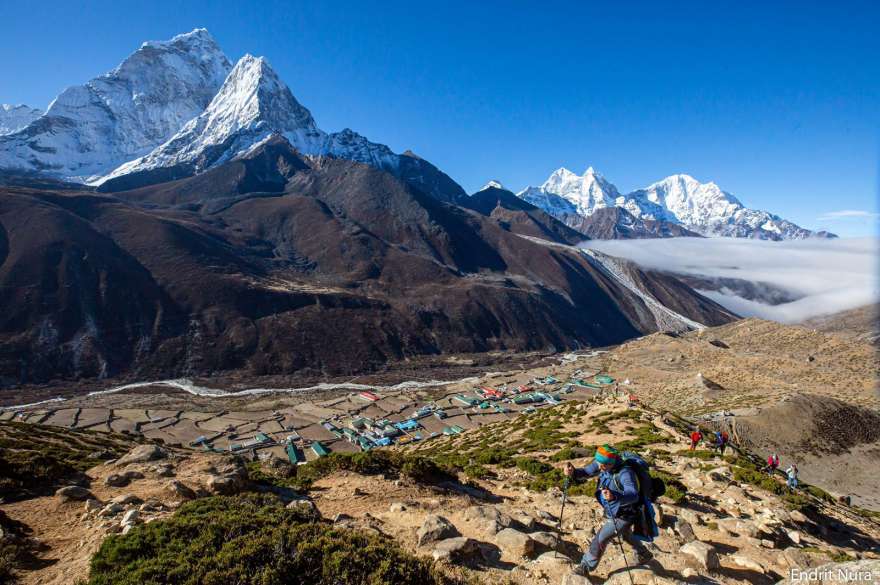

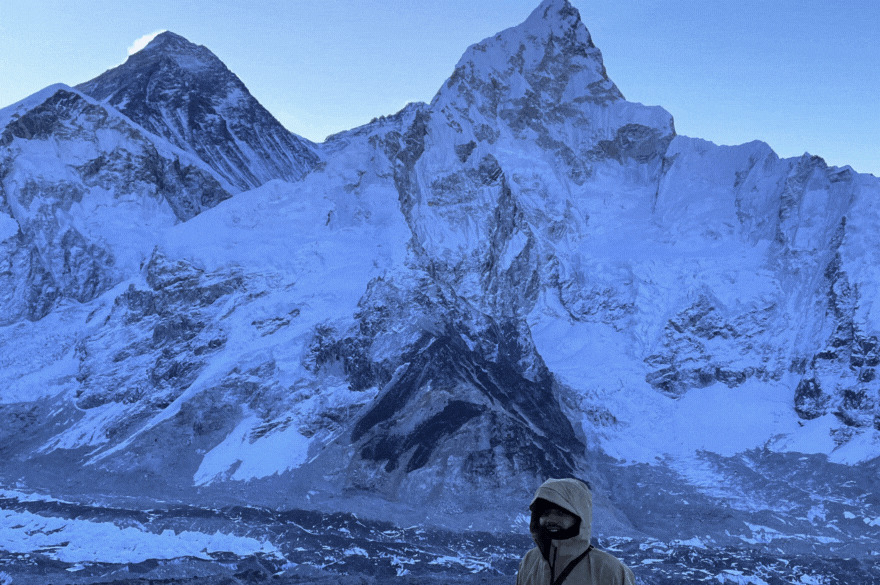
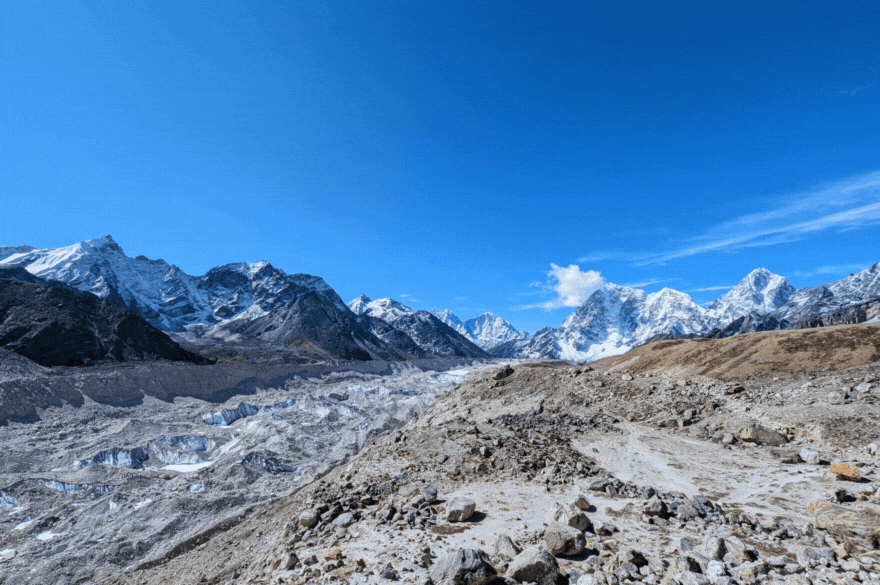
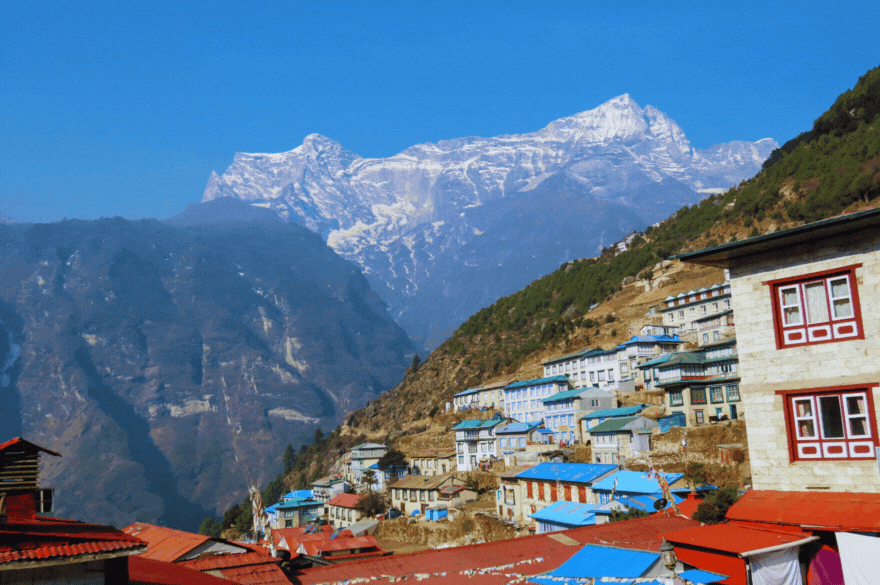
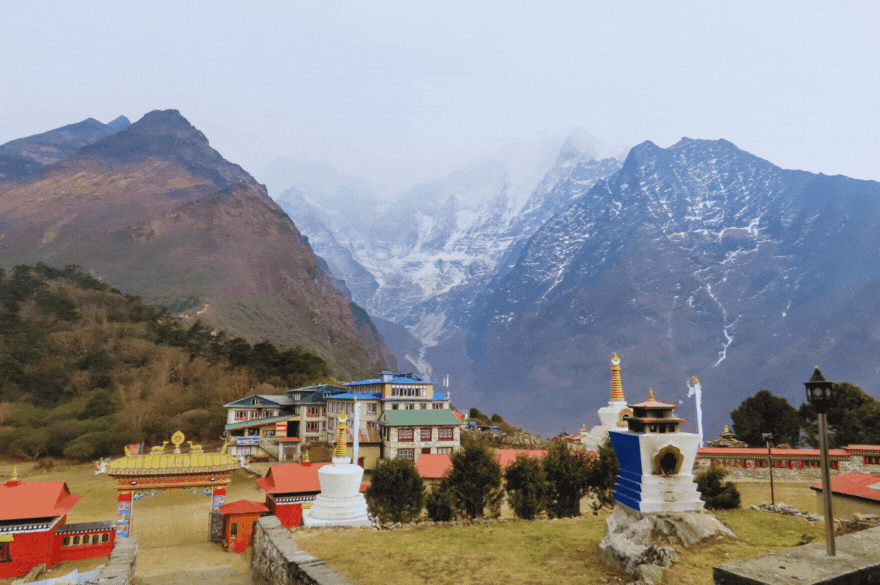
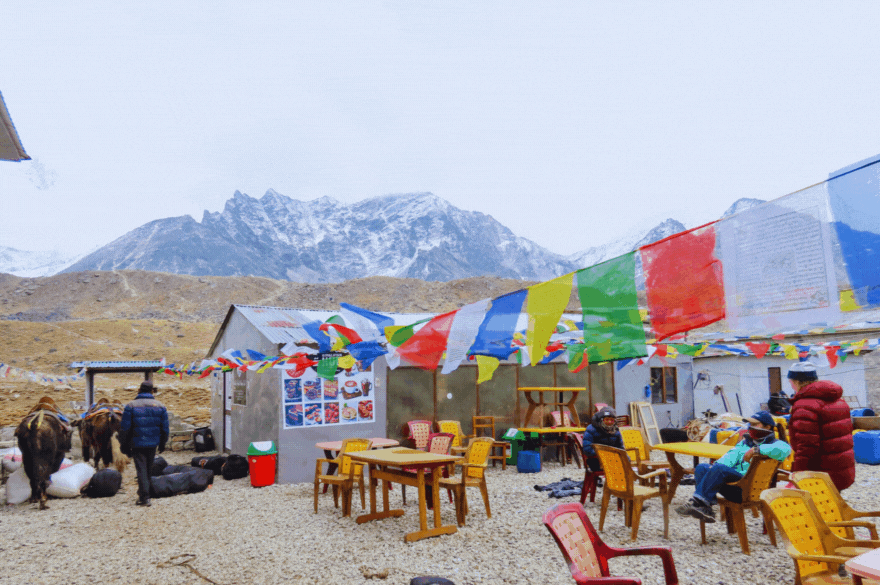
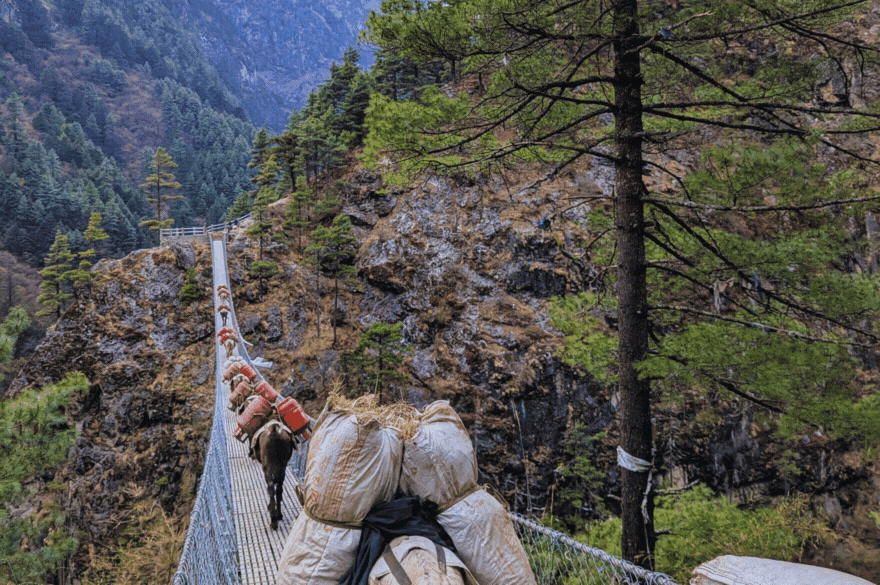
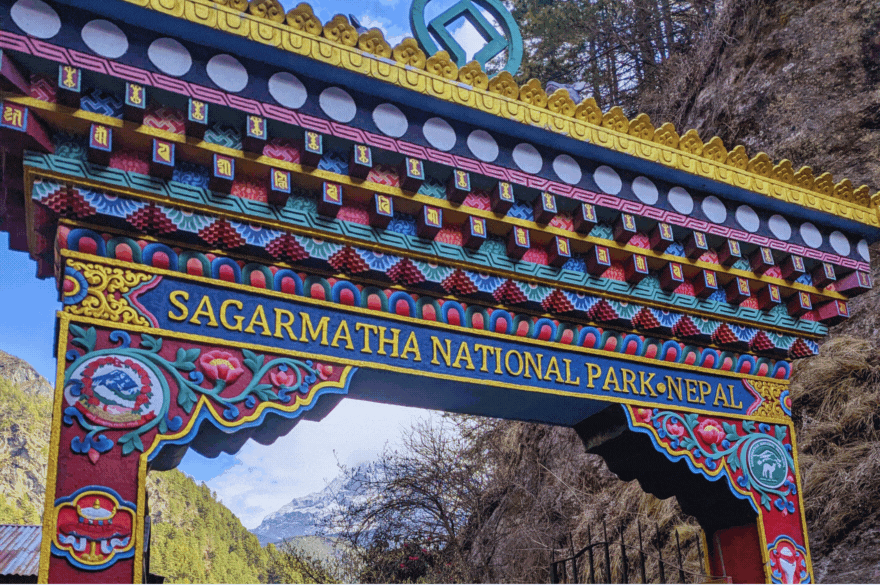
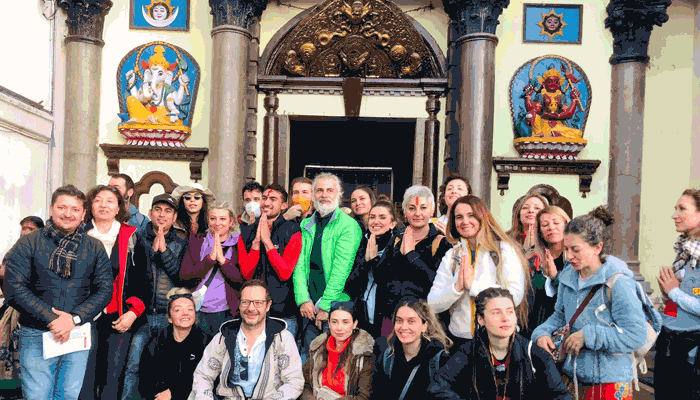
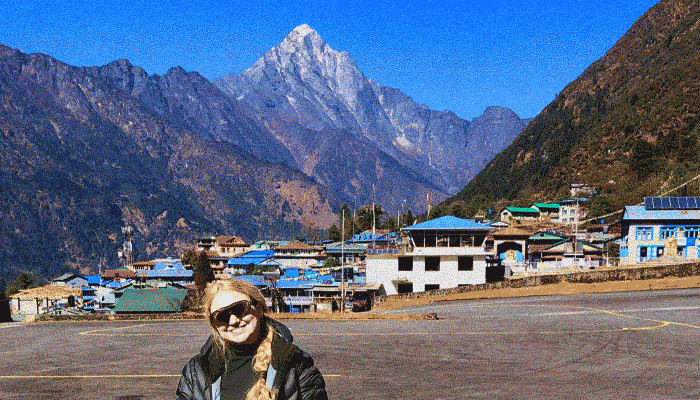

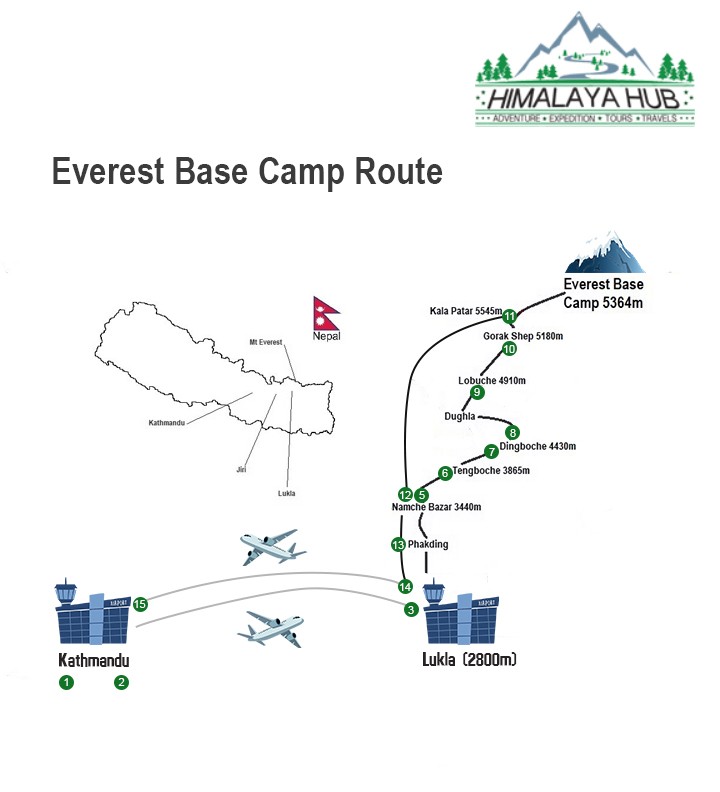
 Himalaya Hub Handles Everything for You
Himalaya Hub Handles Everything for You










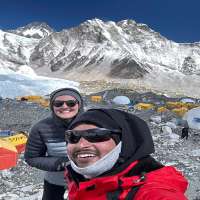
.jpg)
